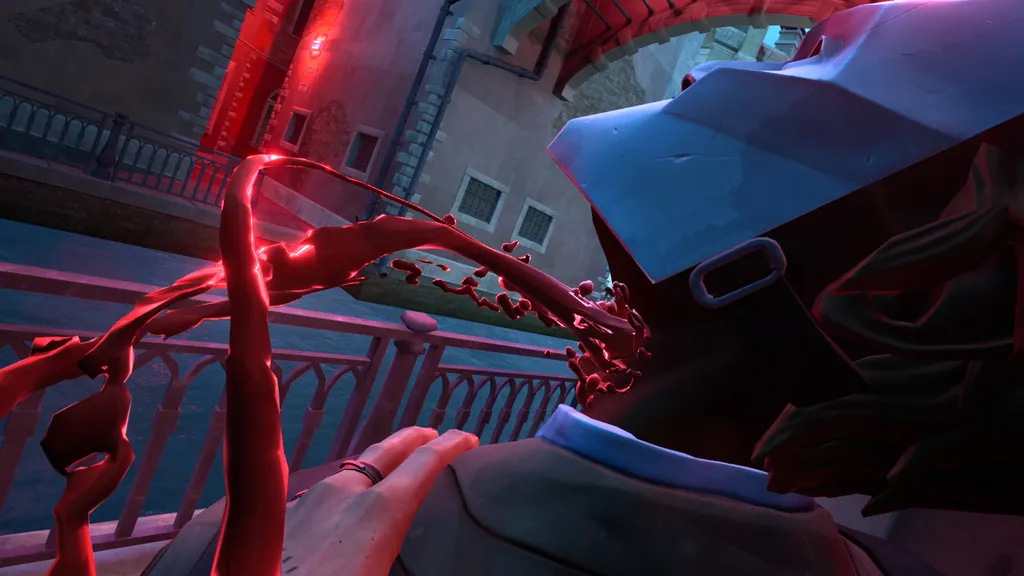Fast Travel Games brings the world of Vampire: The Masquerade - Justice to life with a dark, mysterious tale of vampires and revenge. Read on for our full review.
Vampire: The Masquerade - Justice is an immersive first-person single-player RPG where you step into the role of Justice, a vampire from the Banu Haqim clan. When your mentor (or sire) is mysteriously murdered and a valuable relic stolen, you journey to Venice in pursuit of answers. Armed with powerful vampiric abilities, you must navigate the dark underworld, interacting with humans and Kindred (a vampire’s term for other vampires) to uncover the truth.
Platforms: Quest headsets, PSVR 2
Release Date: November 2, 2023
Developer: Fast Travel Games
Price: $29.99
The World of Darkness
Vampire: The Masquerade - Justice is set in the World of Darkness, a horror universe that began life in 1991 as a series of tabletop role-playing games. There are now multiple video games based around the franchise, with Vampire: The Masquerade - Justice marking the second VR title following Fast Travel Games’ 2021 release Wraith: The Oblivion - Afterlife.
Visually, Vampire: The Masquerade - Justice is very impressive. Grimy alleyways, decaying sewers, and ancient crypts set a suitably dark and gritty backdrop in your quest for retribution. The environments are wonderfully atmospheric and immersive, greatly enhanced by the suspenseful soundtrack from Jeff Ball – a violinist and composer who previously contributed to video game soundtracks like Moss and Gears of War 3.
The first-rate sound design is further complemented by the voice talent, with separate protagonist performances depending on whether you pick to play as the male (Zack Hoffman) and female (Diana Gardner) version of Justice. Both voice actors deliver a somber and brooding performance that fits the undead protagonist to a tee. Overall, the audio and visuals combined create an almost perfect package – almost.
The NPCs don’t have the same level of polish that the other visual and sound elements offer. Stiff character animations with mouths moving out-of-synch to dialogue fall below par with the rest of the game, for example, and stick out like a sore thumb as a result.
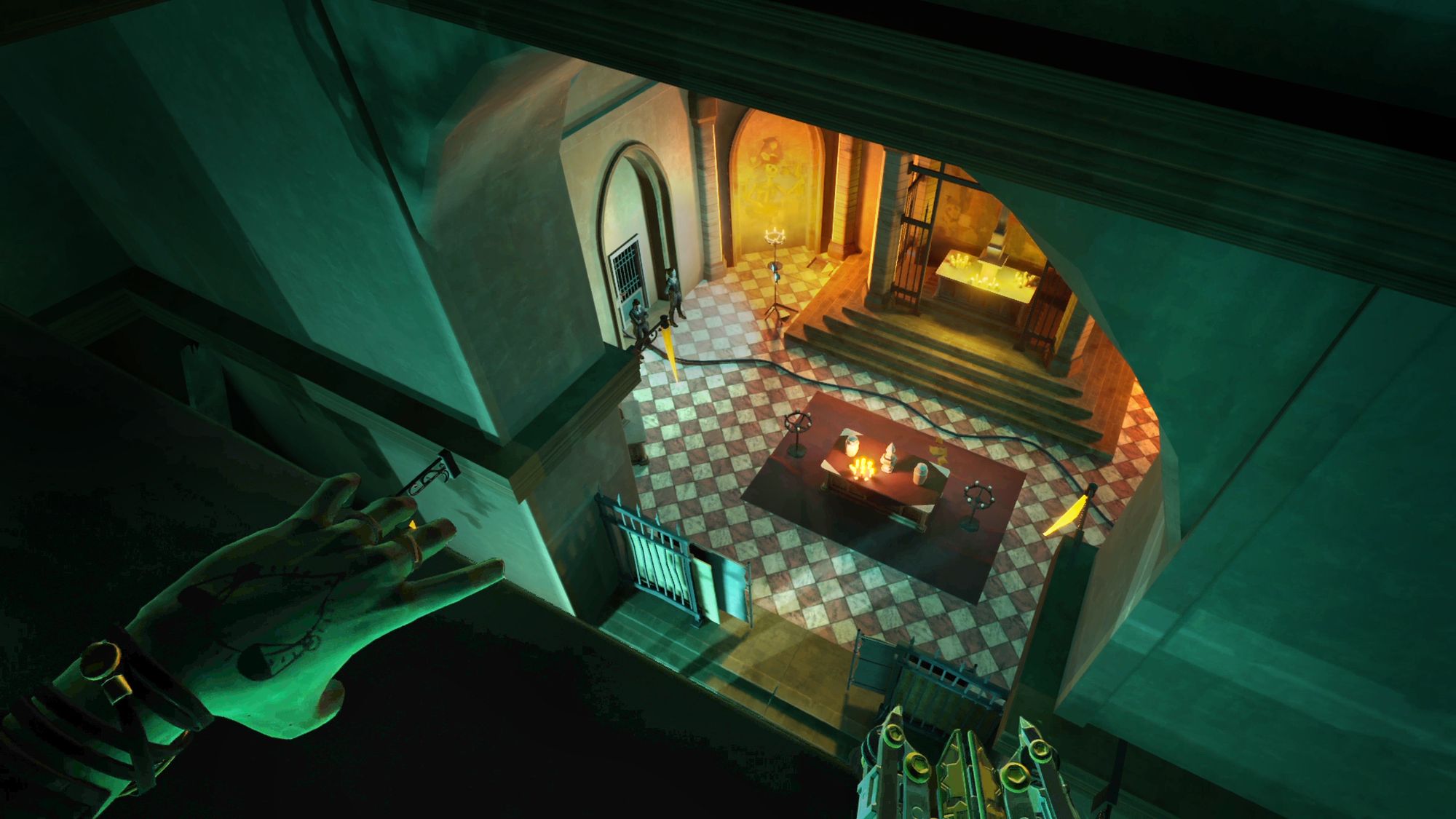
Rich Lore
The tried and true revenge plotline does enough to carry the game but there’s no amazing revelations or mind-bending twists, nor do we see our protagonist go through much personal growth. However, as you progress it’s nice to learn about the rich history and lore of the World of Darkness universe in which the game is set.
Progressively revealing extra tidbits of information about the plot, its characters and lore are done well. Players can learn more about the world, its key players and their motivations through uncovering handwritten notes or finding hidden artifacts. These touches give some extra padding to the game for those who want it and add some incentive to explore the surroundings.
Interactions with NPCs also progress the story forward and during conversations you can often choose between being nice or verbally aggressive. That said, the former doesn’t seem to come easy to a vampire – the ‘nice’ option is often so direct and abrupt that it verges on being aggressive. Choosing one conversation tree over the other doesn’t seem to do much to alter the game anyway, so you’re free to be as big a jerk as you want.
Vampire: The Masquerade - Justice – Comfort
Vampire: The Masquerade - Justice can be played either seated or standing. Players move using continuous stick-based artificial locomotion. Teleportation is not an option, however there are a number of comfort features available. Movement speed is adjustable and players can choose between snap and smooth turning modes, alongside adjustable movement and rotation vignettes.
Supernatural Abilities
Players are equipped with a range of vampiric abilities, designed to be used often to complete missions. Things start out fairly basic. A cloak ability renders you invisible to unalerted enemies, while a Dishonored-esque ‘blink’ ability allows you to instantly dash a few meters in any direction. The latter is great for quickly evading detection or getting to an otherwise hard-to-reach position. There’s also a blink attack, which is the blink dash followed by a pouncing attack for a devastating, but loud, kill.
Experience points are awarded upon completion of each mission, with more XP on offer for finding collectibles and fulfilling optional objectives. Some of the optional objectives include remaining undetected throughout the mission, not killing Mortals, and avoiding damage. They’re each very challenging – I admit to failing almost every single one, though I suspect they’ll add depth for those who want to pursue them.
The XP you earn can be used to upgrade your abilities between missions, with skill trees that focus on improving combat, stealth, or stamina. The one exception is the ‘Intimidation’ skill tree, which gives you the option to intimidate NPCs during a conversation to get what you want – often information or an item to aid you in your mission.
A little into the game, you’ll also get a compact wrist-mounted crossbow that uses bolts with different effects. It adds an extra dimension to the game beyond your vampiric abilities – depending on the bolt selected, it can be used to corrode chains, kill enemies or put them to sleep. Certain bolts can also be unlocked and upgraded with XP via the skill trees.
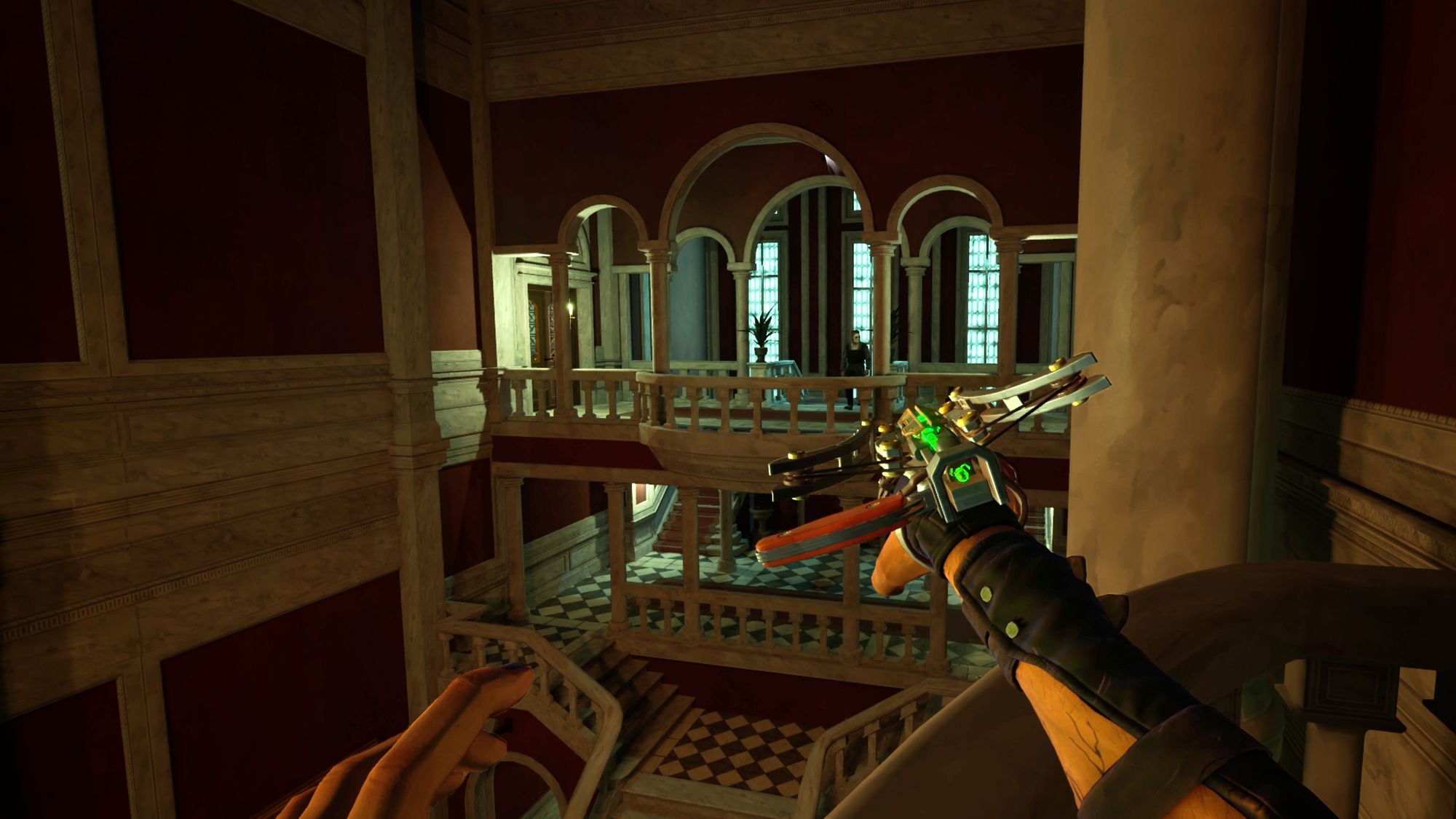
Hunger Games
Managing hunger is a key gameplay mechanic essential for survival. The blood (or ‘vitae’) of your victims restores health and fuels powerful vampiric abilities. Whether it’s concealing yourself in an invisible shroud or boiling a victim's blood until their head explodes, all abilities deplete vitae and increase hunger. You even use vitae to craft crossbow bolts, so an empty stomach leaves you with only your fists to fend with and makes the game much more challenging.
Humans or fellow vampires (known as Kindred) offer the best form of sustenance but rats will also do in a pinch. A little boost is also given if you stop feeding at just the right time – there’s a macabre sense of accomplishment to sneak-grabbing a victim and watching literal life blood flow out from their neck.
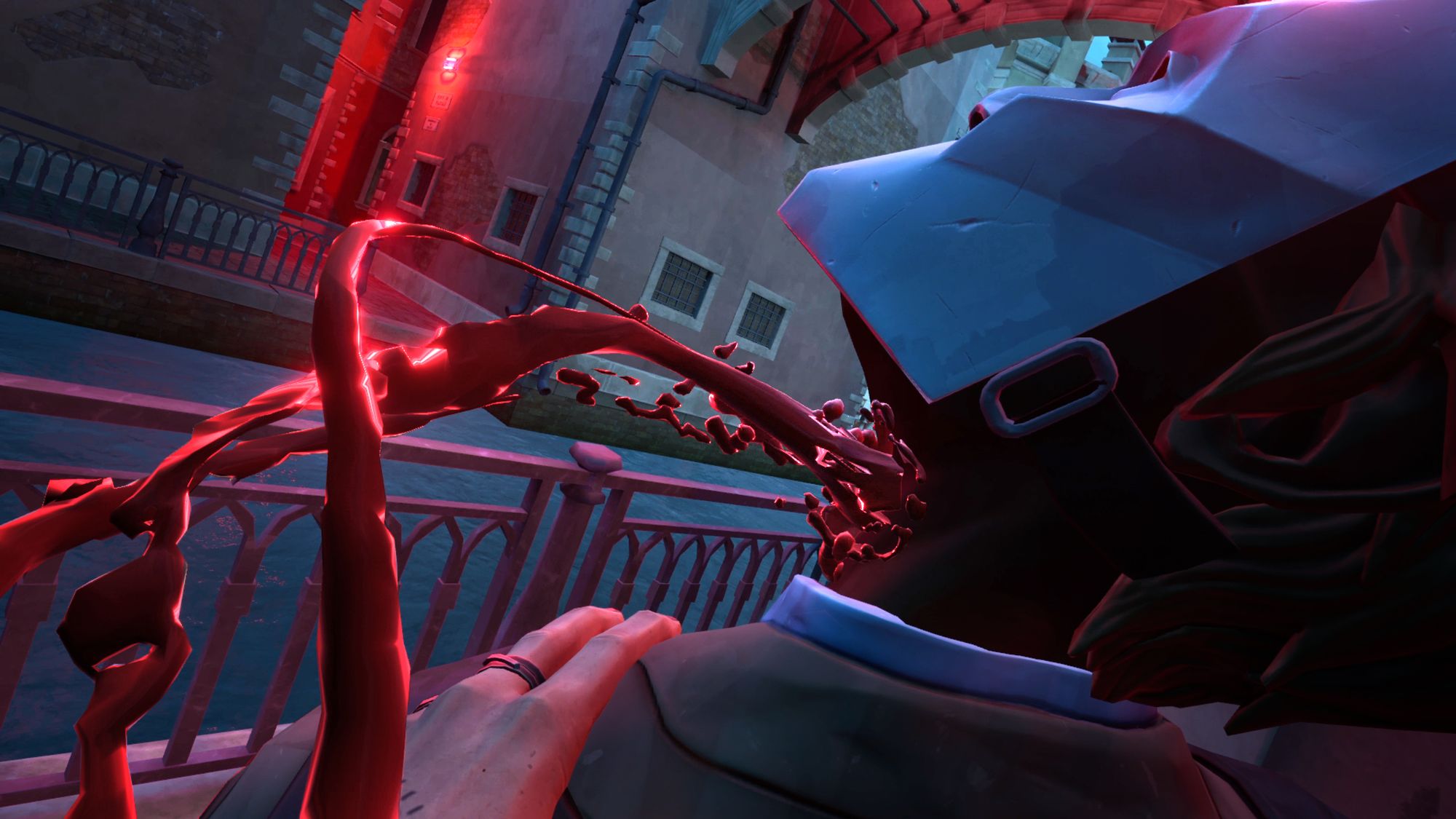
Play Your Way
One of the more enjoyable aspects of the gameplay is the freedom to choose how you approach each mission and encounter. Environments have been cleverly designed to offer multiple routes to reach the objective, with vents, climbable pipes, ledges and scaffolding being the best path for the unseen assassin.
Alternatively, you can take a more direct approach and flex your supernatural muscle by facing your foes head on. Taking the stealthy route is often slower going but less dangerous and may be rewarded with additional XP.
A decent selection of skills and abilities adds to the number of moment-by-moment decisions. For example, do you take your victim out safely from a distance or risk getting close enough to feed and restore your vitae? Is it best to lure a foe into a Shadow Trap and watch them get dragged into oblivion or conserve your vitae by taking them down with a one-two punch combo?
There’s no right answer. It all depends on the approach that’s best for the situation and your survival.
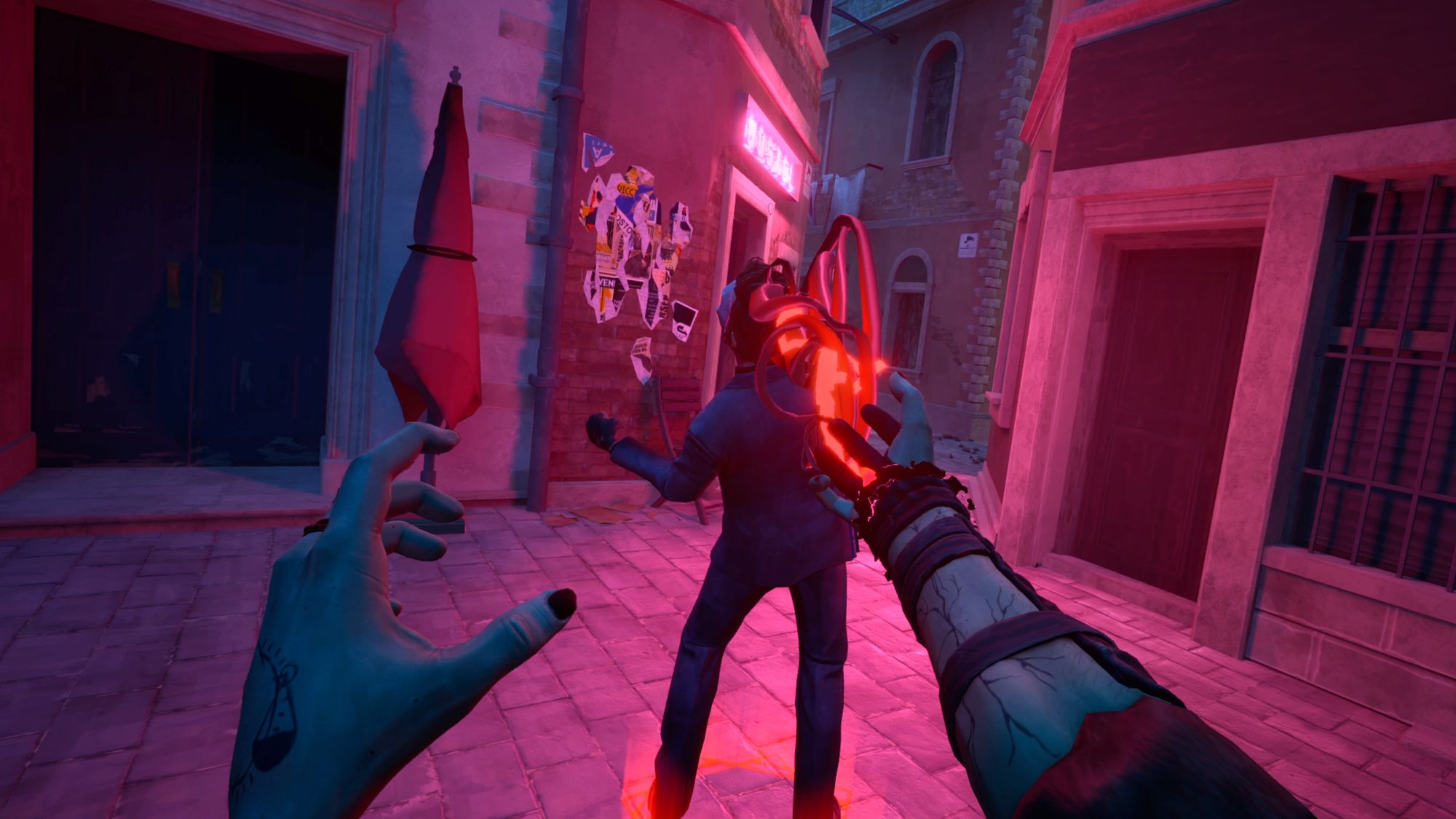
When the game works well, which is often, it makes you feel like a powerful apex predator on the prowl. That’s why it can be frustrating when the flow is interrupted by clunky design. Placing a Shadow Trap on the ground can be difficult to get right, for example, with the place marker sometimes failing to position itself where you’d like it. Similarly, climbing works well but grabbing items by pulling them toward you from a distance is unintentionally difficult to control. These awkward elements can be minor annoyances at best or, at worse, cause you to fumble and get killed.
More Than A Quick Sip
The main story is around 10 hours long, or around 15 hours to complete and collect everything, including several side missions. This makes Vampire: The Masquerade - Justice much more than a bite-size adventure. However, given the length of the game, I noticed a distinct lack in the variety of enemies.
According to lore, the world is host to a litany of nightmarish creatures. Yet aside from some boss encounters, you only ever get to take down human and humanoid Kindred opponents. They may be equipped with different melee or long range weapons, but each armed thug looks much like the other. With similar abilities, they can make encounters feel same-y over time.
On that note, the enemy AI can also be hit-and-miss, with inconsistent and sometimes confusing responses. A dead body may alert one goon but not the other, for example, even if they’re just meters apart. Likewise, making noises to lure an enemy into a trap will work perfectly in one instance, but barely elicit a reaction in another.
Vampire: The Masquerade - Justice Review – Final Verdict
Vampire: The Masquerade - Justice delivers top-notch audiovisuals and a polished gameplay experience that feels like it’s been crafted with care and respect for the material. The storyline is solid and provides an exciting opportunity to delve into the rich lore of the World of Darkness franchise.
It offers a compelling amount of freedom and flexibility in approaching missions, with multiple routes and a variety of abilities keeping gameplay dynamic and engaging across the generous 10 (or more) hour campaign. However, occasional clunky design elements, a lack of enemy diversity and issues with the AI are noticeable drawbacks that sometime detract from the enjoyment.
While Vampire: The Masquerade - Justice has a few flaws that keep it from reaching greatness, it nonetheless offers an immersive RPG experience and a captivating adventure worth sinking your teeth into.

UploadVR uses a 5-Star rating system for our game reviews. You can read a breakdown of each star rating in our review guidelines.

